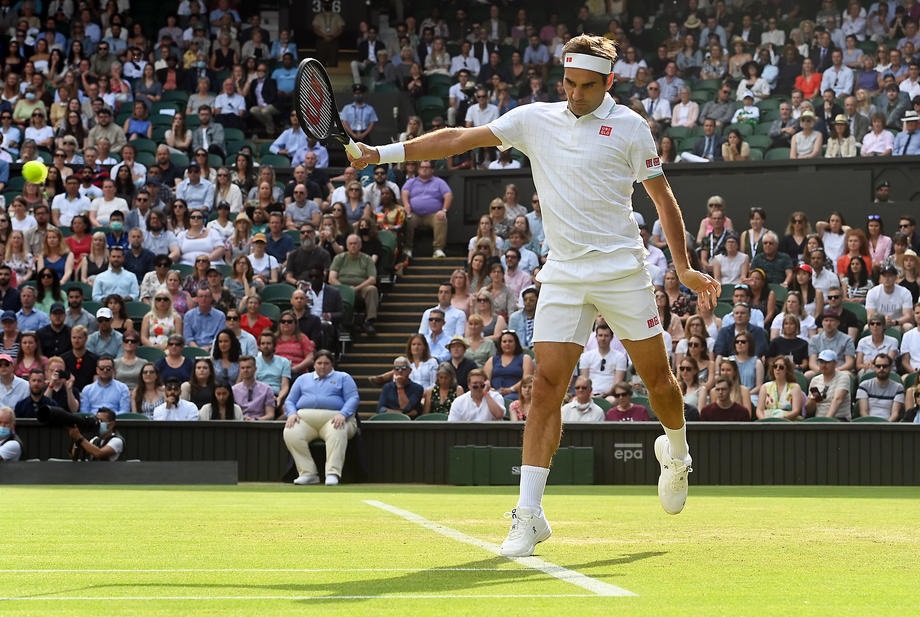- The Australian Open Has Always prided Itself As the “Happy Slam” by Alix Ramsay
- Australian Open Draws and Order Of Play for Friday, January 24, 2025
- Ricky’s pick for the Australian Open semifinal between Djokovic and Zverev
- Courageous Keys Stuns Swiatek for First Australian Open Final
- Australian Open Draws and Order Of Play for Thursday, January 23, 2025
- Ricky’s pick for the Australian Open quarterfinal between Sinner and De Minaur
- Australian Open Draws and Order Of Play for Wednesday, January 22, 2025
- Goran Ivanisevic Is No Longer Coaching Elena Rybakina
- Ricky’s pick for the Australian Open quarterfinal between Alcaraz and Djokovic
- Australian Open Draws and Order Of Play for Tuesday, January 21, 2025
- Tennis Report From Australian Open: Novak Making A Run by Alix Ramsay
- Australian Open Draws and Order Of Play for Monday, January 20, 2025
- Five-set frenzy continues in third round of Australian Open
- Australian Open Draws and Order Of Play for Sunday, January 19, 2025
- Pam Shriver’s Car Containing Grand Slam Trophies Stolen in California
“A New Look – Is A Players’ Union Needed ?” By Mark Winters
- Updated: July 12, 2019

Photo by Brett Connors Photography
Following the 2018 Australian Open I wrote a story titled “Players’ Union – Is It Needed?” which examined how tennis professionals, contrary to popular assumptions, really didn’t have effective representation, along with the necessary protection needed to participate in such a grueling sport. Following this year’s championship Down Under, I have updated the feature…
At the annual mandatory 2018 ATP players meeting in Melbourne prior to the start of the Australian Open, Novak Djokovic, the president of the Players Council, discussed creating a “real” players’ union. The idea involved forming an organization that was solely focused on improving the wellbeing of its members. Unfortunately, the day after that idea was put forth, Djokovic back-peddled. Borrowing, perhaps, from the “Fake News” pillorying that has become a part of today’s political news cycle, he claimed his message was taken out of context. Somehow, he overlooked the fact that he had a lawyer with union expertise on hand to discuss some of the details involved in creating a legitimate union. He claimed that all he was interested in seeing was that the players earned more from the game’s behemoths, the fortune making Grand Slam tournaments.
While the prize money has increased and the slams, along with many other tour events have added a collection of player amenities, the point is clear. The union concept didn’t gain traction. The alphabet leaders – particularly the ATP and ITF – joined by organizations representing players, the tournaments themselves and other assorted tennis business interests, made sure it remained a “decent idea” and nothing more. Bottom line, there is no way this group was going to lose its almost ironclad control of the game. (For whatever reason, the WTA has been sidetracked and become a meaningless anacronym with next to no grasp of comprehensive player representation. As a result, it is not part of the discussion.)
Maintaining the status quo, albeit with occasional new touch-ups to cover the surface chipping, seemed entrenched until Chris Kermode’s leadership was put in the spotlight this year in Melbourne. Vasek Pospisil, who is on the Player Council representing those ranked between 50 and 100, e-mailed fellow players saying that the group should begin to act like it was involved in running a major business. What’s more, members should not be afraid to voice opinions. The Canadian pointed out that the current ATP operation clearly favors tournaments and the individuals/companies that own them, (meaning that the players are secondary at best, even though they are the ones the throngs of fans pay the big bucks to see). He suggested that Kermode’s contract should be terminated and a CEO, who focuses on players’ genuine interests, should be found.
As is often the case when there is administrative turmoil in tennis, an all-star cast of current and former players have been waving their Kermode flags in support. The steal-strong backing was offered despite the facts Pospisil put forth, including the point that the prize money offered by the majors was still less than ten percent of their annual revenue. In the end, he became an outlier.
In “A Tennis Wish List for 2019” , which appeared in the January 12th edition of the New York Times, the esteemed tennis journalist Christopher Clarey admitted that his No. 1 wish was for tennis unity. He wrote, “That would require each of tennis’s seven governing bodies to cede some of its authority, a situation that would probably require an existential threat to the game’s viability or profitability.
“In an imperfect but still better world, unity could also mean a genuine players’ union — why not men and women together while we’re wishing? — That could make for more meaningful progress on tennis’s now-intractable issues through tough negotiations with those who own and operate the tournaments.
“In the current system, the players and regular tour events are in partnership, an unusual arrangement in professional sports that can make consensus and change difficult.
“Novak Djokovic, back at No. 1 and president of the ATP Player Council, has explored the concept. But for now, a union appears to be wishful thinking: too many legal and logistical hurdles.”
Perhaps insight, along with “how to do it” direction, could be gained from what took place in New York during the first week of January, this year. A collection of major banks and brokers decided to set up a new stock market in the US. The Members Exchange idea was driven by the unhappiness resulting from a number of issues. Foremost was the fees exchanges charged for transferring money. The back story is clear – Those involved want to control their own destiny.
Time will tell if the players will ever be able to have anything more than pseudo control. Time is also a component in Kermode’s case. His position will be the major issue discussed at the ATP players meeting at BNP Paribas Open in March at Indian Wells, California.
It is important to note that Pospisil has had the courage to draw a line in the sand saying, “Our system is broken … it’s time for a change.”
Perhaps there will be others who, once the “politicking” is side-stepped, find the gumption to step up. Imagine if a standalone organization, a player collective sans tournaments, agents and organizations, was decided upon? In 1973, the concept resulted in the original ATP being brought to life. In 1990, a bad knock-off version II originated. Will ATP members have the fortitude to cross the line with Pospisil and initiate a process that will lead to actual player representation in the world of tennis?
Unfortunately, other than a smattering of vocal support, things haven’t changed much. Players at the top of the rankings are busy training, traveling then competing. Competitors, who are more lowly ranked, have tunnel vision when it comes to finding tournaments where they can build their rankings and collect decent prize money. Collectively, players don’t seem to have enough hours in the day to do all that is needed to even get the ball rolling to launch a union.
Pospisil’s effort could be a start. But, realistically, as was pointed out in the conclusion of “Players’ Union – Is It Needed?”, the inference is still the same in this update, which means the answer to “Will a union come about?” is – Not Likely…






